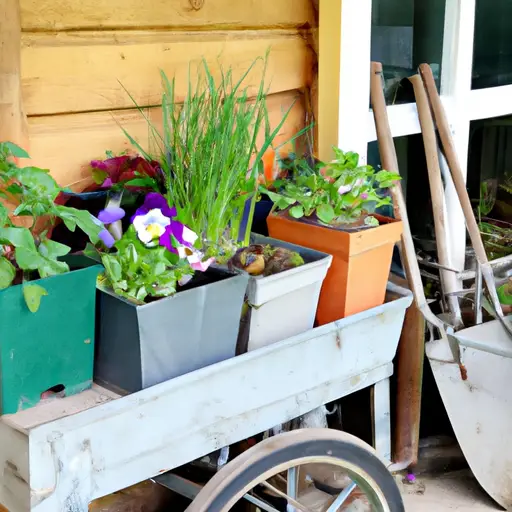Container Gardening Made Easy: A Beginner’s Guide
Container gardening is a popular and enjoyable way to bring greenery and freshness into your home, even if you have limited space. Whether you live in an apartment or have a small yard, container gardening can be a convenient and rewarding hobby. In this beginner’s guide, we will take you through the essential steps of container gardening so that you can create your own lush oasis.
Choosing the Right Containers
The first step in container gardening is selecting the right containers for your plants. Consider the size of the plant you intend to grow and choose a container with enough space for its roots to grow and spread. Clay pots are popular due to their natural look and ability to absorb excess moisture, while plastic containers are lightweight and affordable.
Ensure that your containers have drainage holes at the bottom to allow excess water to escape. This prevents waterlogging, which can lead to root rot and other diseases in your plants. If your chosen containers do not have drainage holes, thoroughly layer the bottom with gravel or broken pottery shards before adding soil.
Selecting Suitable Plants
When choosing plants for your container garden, consider their sunlight requirements, temperature sensitivity, and growth habits. Different plants have different needs, so it’s essential to select those that are compatible with each other and thrive in similar conditions.
For beginners, it’s best to start with easy-to-grow plants like herbs, lettuce varieties, cherry tomatoes, marigolds, or petunias. These plants are relatively low maintenance and forgiving for beginners who are still honing their gardening skills.
Potting Mix: The Secret Ingredient
Using quality potting mix is crucial for successful container gardening. Regular garden soil tends to be too dense when used alone in containers, leading to poor drainage and root suffocation. Opt for a well-draining potting mix specifically formulated for container gardening.
Potting mix often consists of a blend of peat moss or coconut coir, perlite, vermiculite, and organic matter. This combination provides an ideal balance of water retention and aeration, allowing plants to establish strong root systems.
Planting and Care
Before planting your chosen plants, make sure to wet the potting mix thoroughly. This helps prevent the mix from repelling water after planting. Gently remove each plant from its nursery container, loosen the root ball to encourage healthy growth, and place it in the center of your chosen container. Add more potting mix around the plant until it is securely anchored.
Once your plants are potted, water them thoroughly to settle the soil and ensure proper hydration. Be mindful not to overwater or underwater – observe your plants’ moisture needs and adjust accordingly.
Container gardens generally require more frequent watering than traditional garden beds as they tend to dry out faster due to increased exposure to sunlight and airflow. Stick your finger an inch into the soil; if it feels dry, it’s time to water your plants.
Regular fertilization is also essential for keeping container plants healthy and vibrant. Use a balanced liquid fertilizer or slow-release granules according to the instructions on the packaging.
Pruning and Maintenance
Pruning is essential for maintaining healthy container gardens. Regularly remove dead or yellowing leaves, spent flowers, and any overly long or leggy stems. This helps promote new growth while preventing disease spread within the container.
As many containers can be heavy when filled with soil and mature plants, ensure that you place them in a location that can support their weight without risking damage or injury. Consider using wheeled bases or decorative plant stands that allow easy movement of larger containers as needed.
Pest Control
Just like traditional gardens, container gardens can be susceptible to pests such as aphids, mealybugs, snails, and slugs. Regularly inspect your plants for signs of infestation like yellowed leaves or sticky residue on the foliage. Use organic pest control methods such as neem oil or insecticidal soap to prevent and control pests.
Extend the Growing Season
Container gardens offer the flexibility of extending the growing season since you can move them indoors during colder months. Consider growing cold-hardy plants like kale, Swiss chard, or winter greens during winter months. Place your containers near a sunny window or use grow lights to provide adequate light for your plants’ growth.
Conclusion
Container gardening is a fantastic way to exercise your green thumb and enjoy the beauty of plants even in limited spaces. With careful planning, optimal soil conditions, proper watering, and regular maintenance, you can create a thriving container garden that brings joy and tranquility into your home. Remember, gardening is a continuous learning process, so don’t be afraid to experiment and try new things while embracing the rewards that come with nurturing vibrant container plants.













